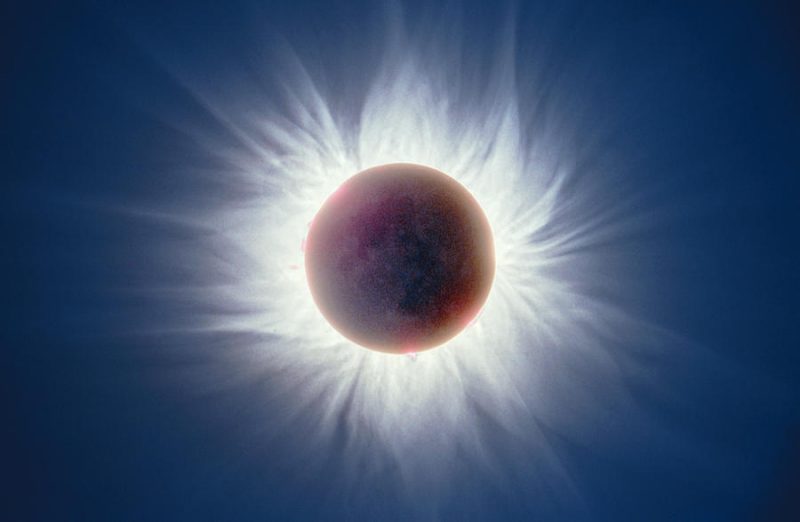
There are between four and seven eclipses each year, some total, some partial, some lunar, some solar. In 2021, we’ll have four eclipses:
May 26, 2021: Total lunar eclipse
June 10, 2021: Annular solar eclipse
November 19, 2021: Partial lunar eclipse
December 4, 2021: Total solar eclipse
On a worldwide scale, a lunar eclipse always comes within one fortnight (approximately two weeks) of a solar eclipse.
The first eclipse of 2021 happens during the nighttime hours on May 26, 2021, as the full moon passes through the Earth’s dark umbral shadow to display the first total eclipse of the moon since January 21, 2019. Find out if and/or when this eclipse is visible in your sky via TimeandDate.com.
One fortnight (about two weeks) after the May 26 total lunar eclipse, the new moon will sweep directly in front of the sun to present an annular solar eclipse, whereby an annulus – or thin ring – of sunshine surrounds the new moon silhouette. Although the annular solar eclipse can only be viewed from rather limited swath of the Earth’s surface, a much larger part of the world will be in a position to watch a partial eclipse of the sun. Find out if and/or when this eclipse is visible from your part of the globe via TimeandDate.com.
Read more: Top 7 tips for watching the sun safely
One semester (six lunar months or six full moons) after the May 26 total lunar eclipse, an almost-full partial lunar eclipse will take place on November 19, 2021. Then a total eclipse of the sun will happen on December 4, 2021, exactly one semester (six lunar months or six new moons) after the annular solar eclipse on June 10, 2021.

Fortnight separation between solar and lunar eclipses. A solar eclipse always takes place within one fortnight of any lunar eclipse. This year, we have a pair of eclipses (one lunar and one solar) in May-June 2021, and then again in November-December 2021.
Somewhat rarely, a lunar eclipse can come one fortnight before and after a solar eclipse. This most recently happened last year, in 2020:
June 5: Penumbral lunar eclipse
June 21: Annular solar eclipse
July 5: Penumbral lunar eclipse
Also, somewhat rarely, a solar eclipse can occur one fortnight before and after a lunar eclipse. This last happened in 2018:
July 13: Partial solar eclipse
July 27: Total lunar eclipse
August 11: Partial solar eclipse
Read more about three eclipses in one month



Bottom line: Here are the dates of all solar and lunar eclipses in 2021.











